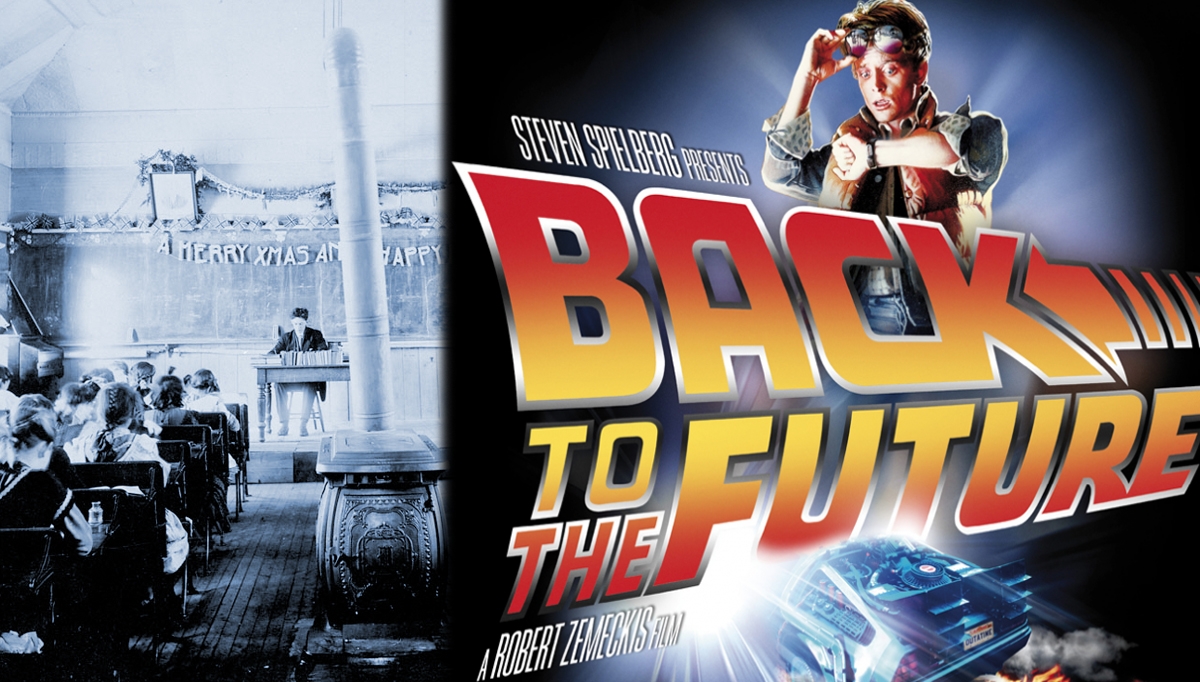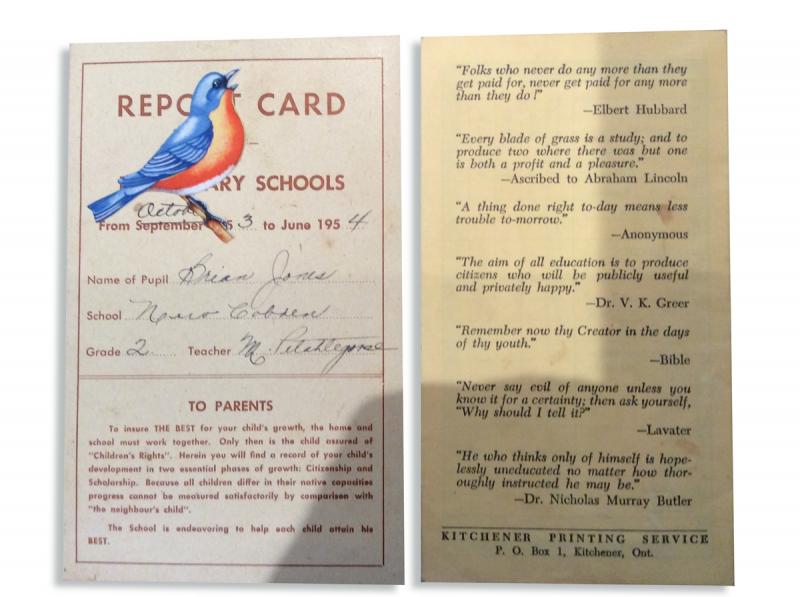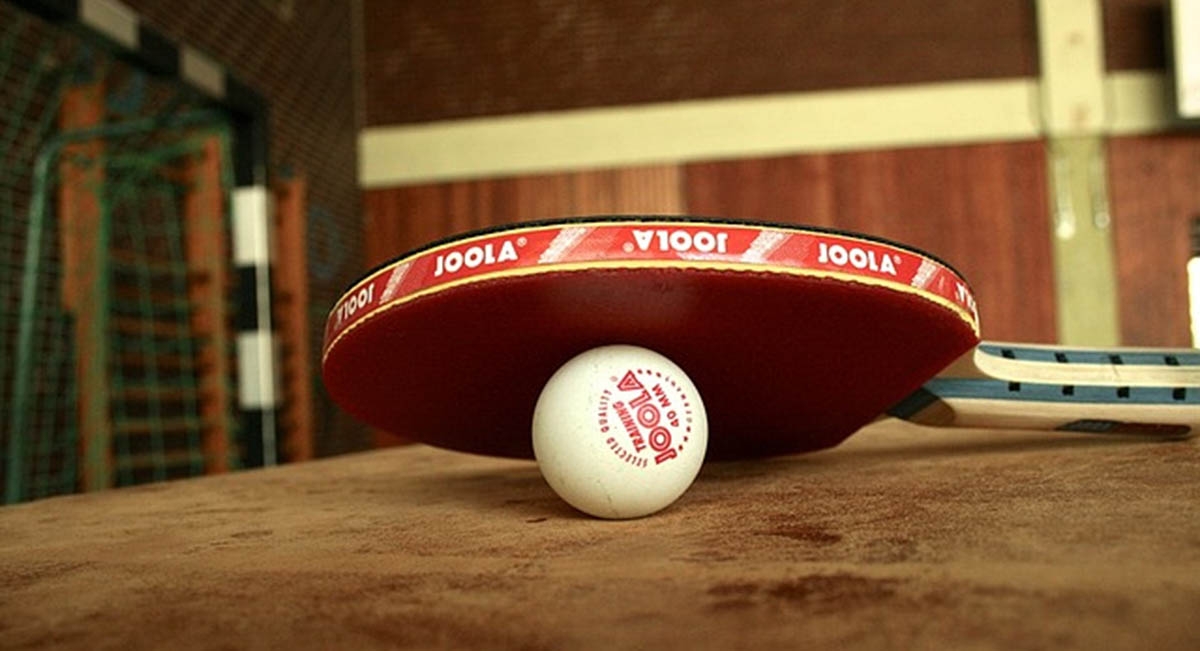
Back to the Future: Ontario education now and then
Back to the Future was a 1980s science-fiction classic about a small-town California teenager, played by Michael J Fox. When an experiment by an eccentric scientist friend Doc Brown (Christopher Lloyd) goes awry, the teenager is thrown back into the 1950s. This is a time-travel classic. It is full of fun and is a great story. The teenager meets up with younger versions of his parents and has to make sure that they actually fall in love, so that he will be able to exist when time progresses into the future. It becomes even more interesting when Marty has to return to his own time and be the hero to save the life of Dr. Brown.
Back to the Future gave me food for thought, when I reflected on the current delivery of Ontario elementary school education. Since the 1950’s, many efforts have been made to improve the quality of education. Every new provincial government seemed to want to try something different. During my career as a professional elementary school teacher, I saw our government leaders, educational gurus, school board trustees, involved parents, and dedicated teachers, attempt to improve the delivery of the knowledge and skills, which they thought would result in exceptionally well prepared graduates, ready for post-secondary education or the workforce.
I saw the rise and/or fall of such innovations as individualized instruction, open concept schools, team teaching, whole language instruction, discovery learning, vertical groupings, streaming, congregated gifted classes, inclusion practices of special needs students, and additions to the curriculum of subjects like computers, sex education and second language programs, to name but a few. But somehow, despite having greater knowledge about how people learn, better educated teachers, far more resources, smaller classes, and dramatically increased financial funding to support education, the outcomes often fell short of expectations.
I had the pleasure to speak at length with Mr. Larry Ross Jones, a former gifted high school geography teacher with the Ottawa school board, who retired in 1998. Those who knew him as a professional, speak highly of him. Students who had him instruct them, remember him as an inspiring, amazing intellectual, who set a standard for Ontario teachers that few could attain.
Larry was a man who absorbed new information with every breath, like a high quality surgical sponge, from the time he was a toddler. He was passionate about learning, was incredibly curious about everything around him, and decided at a very early age that he wanted to be a teacher. While he was gifted enough in every subject to have a career in almost any field, he chose to share his own intellectual gifts with children, and remain in the classroom. He motivated adolescents to stretch their brains, to think deeply and to work hard, so they could attain the highest levels of knowledge possible, for his entire 35-year career.
We got to talking recently about the changes in education which we both experienced during our careers, he as a high school teacher, and me as an elementary school teacher, in Ontario, during the last half of the 20th century, roughly. We reflected on whether the education provided many years ago, when we were growing up in the 1950s and the 1960s, was not actually better, simpler, cheaper, and worthy of revisiting to examine some of its features, when considering changes heading into the future.
I took a trip back down his memory lane, and he savored and delighted in recounting every minute of it.
Larry was born in the spring of 1943, in a rural community known as Mattawa, Ontario. His mother had a high school education and was an elementary school teacher in a one-room schoolhouse in their rural community. She sometimes taught up to 60 children by herself educating them altogether, in grades one through eight. There was no running water, no additional resources, no extra helpers, little if any supervision, no indoor toilets, and she lit the fire that heated the schoolhouse by herself on cold winter mornings.
Only a few months after he was born, Larry’s father, a Canadian soldier, left Canada to serve in World War II, unsure that he would ever return to his family and their farm. Larry’s mother cared for her infant son, with the assistance of Larry’s grandmother, and carried him with her several miles, while walking to the schoolhouse, on many a teaching day, when childcare was unavailable.
Childcare issues were solved in this way, at a cost next to zero.
Larry’s mother and grandmother were highly intelligent, well-read and well-informed women, who provided Larry with much intellectual stimulation. They encouraged his curiosity about the world from the get-go. He was read to from the time he was an infant, heard classical music and current events programming on the radio regularly, and was involved in higher-level discussions about politics around the dinner table, virtually every day. He was a reader before he went to school, was given a ton of responsibility on the farm as a young child, and was expected to demonstrate the Christian values his parents adhered to, in all his encounters with other people.
Extra-curricular enrichment, values education, character development and educational support was provided at home in this way, at next to zero cost.
No one ever identified Larry as a gifted child. No one never told him he was entitled to anything that anyone else wasn’t. He was simply expected to do his best at everything he was asked to do at home, at school, and in his community. He was taught to always contribute his talents in any setting in which he was involved, to do it willingly to the best of his ability, and to expect nothing in return except the pleasure of contributing to making the world a better place. He never thought he was special, he was never told he was amazing, and he grew up a humble but learned and responsible man.
Character developments and values education for a gifted child were instilled in this way, at a cost next to zero.
Larry’s elementary education was accomplished with great aplomb at Larch Wood Public School, for grades one and two, and grades four through eight, beginning in 1948. Grade 3, in 1950 to 1951 was in a one-room schoolhouse in Dowling Township. Characteristically, both school settings were extremely basic, but with exceedingly knowledgeable, competent female elementary school teachers, with only high school education and normal school credentials, common at the time. Class size was between 20 and 35 children most years, with students at all levels from grades one through eight taught together in one room.

Larry recently found a few dusty old scribblers, in a basement circa 1938 cedar hope chest, which had belonged to his mother. The notebooks were those of his younger brother Bryan, who had attended the same school as Larry, in second grade. Sadly, Bryan died in the spring of 1954, from Tularemia. His yellowed blue-lined newsprint scribblers revealed much about the education the children had in that one room school house.
Bryan Jones’s March 1954 report card suggested he was an average student, with most of his grades being B or C. His Arithmetic grade was B and the comment was “Satisfactory”. I noted that the work within was exactingly completed with care, precision, incredible organization and that the arithmetic level was about fourth grade by today’s Ontario mathematics curriculum standard. The printing, sentence structures and spelling standard was at least one to two grades above that which I saw at the end of my own career while teaching third and fourth grade English, to French immersion students, in an excellent socioeconomic area, in 1998.
I asked Larry about ‘curriculum’ in that one room school house, We both agreed that ‘curriculum’ is what actually happens in a school, during the day, that the children experience. It is not a fancy document, written by academic intelligentsia, from a distance. Larry remembers having three basic graded textbooks: a reader, a speller and a mathematics textbook. In fifth grade, he had a history and geography textbook, which was called ‘Pirates and Pathfinders’. In addition to this, he had a book of Bible stories for religion lessons. Other than that, the teacher herself decided what content was taught, how to teach it, and what the children needed to learn.
The basic curriculum topics were laid out in the graded textbooks and individualization was provided by a highly competent teacher, in this way, at next to zero cost.
Larry told me that he regularly completed all the instruction and exercises his teachers requested of him quickly and with skill. If something was being taught in a higher grade that interested him, he often listened in. He remembers in first grade being fascinated with the current events discussions and presentations being studied by grades 5 through 8, and recalls in incredible detail, how he learned about the role of the Canadians and Americans, in the Korean War. Other children often did the same thing, thereby enriching the learning experiences, which were made possible due to the vertical grouping of so many grades, in one room.
Individualization and enrichment were provided in this way, at next to zero cost
When Larry finished his own work assignment, he often accessed a small three shelf library at the back of the class. He enjoyed having the opportunity to read books which he did not have at home, and thought having extra time beyond what other kids needed to complete assignments, to be a real bonus. Larry recalls picking a book from the shelf in first grade, about the Second World War and learned about the Holocaust and Anne Frank. The book made a lasting impression on him, especially the many pictures within it. Another book he read and enjoyed as a first grader from that shelf was, “Over the Line”, which he studied by himself. He learned from the stories, which filled the roughly 200-page book, the basics of American football, including the role of a quarterback, scoring and famous players.
Individualization, enrichment, and self-directed learning was accomplished in this way, at next to zero cost.
Sometimes, Larry would use his extra free time to help weaker students or younger ones. Once, when an inspector was visiting the class, Larry leaned over to help a friend get the right answer for a question on a test. He was smiling when he told me the inspector grabbed his ear and said. “I didn’t ask you!”
Opportunities for leadership, tolerance, individualization, character development, and volunteer work were provided in this way, at next to zero cost.
‘Curriculum’ included Halloween parties, and most children made their own costumes or parents bought crepe paper, two-dollar, single use, purchased costumes. The youngsters brought in home baking, candy and played a ton of games made up by the kids and teachers, in which everyone was included.
The students learned how to be inclusive, work collaboratively and have a great time for hours, at next to zero cost.
Each year there was a Christmas concert, and every single child had a role to play. The students worked for months learning songs, creating sets, practicing plays, preparing programs and practiced collaborative skills by preparing a performance that every parent and their dog attended, to celebrate their children and the festive season.
Opportunities to celebrate cultural events, to work collaboratively, to be inclusive, to express themselves creatively, and for parents to witness their children’s talents and accomplishments, was provided in this way, at next to zero cost.
Larry was no angel though, and got into trouble more than once. He told me of an occasion in second grade when he and a buddy had finished their work and decided to take advantage of the fact that their teacher was busy with another group. The mischievous boys decided to make a full squadron of paper airplanes, go to the back of the class and propel them back and forth at each other, quietly of course, so as not to disturb the class.
But their 18-year-old, first year teacher did not think that was kosher, and meted out the deserved punishment fairly and justly, as was the standard, in those times. Miss Taylor took out a 2 ½ foot long leather strap. Larry said he remembers thinking that he was sure it was wide enough and thick enough that it would not break. Her first swat with the strap was halfheartedly delivered and the two boys began to giggle. Sweet young Miss Taylor decided to improve her delivery of the punishment and whacked the boys 10 times each, with increasing and greater force at each blow.
In the world of an eight-year-old rural boy in Northern Ontario, in 1953, Larry knew that no one must ever see him cry. He recalled that the two boys were stoic, even though he said the strap “hurt like hell”. Nervously, however, the boys continued giggling and it was Miss Taylor who in the end, actually broke down. It was she who began crying, out of the frustration of dealing with these playful young charges. Larry said that he and the other children knew, never to repeat the behaviour that he and his partner in crime displayed. And sweet Miss Taylor never knew how effective her consequence had been. Not only did Larry and his buddy not engage in this kind of foolery in the class subsequently, but every other student remembered the shocking and painful event. As well, Larry could not recall the use of the strap being needed with his any of his classmates, for any reason, ever again.
Discipline in the class was fair, swift, and effective in those times, at next to zero cost.
I asked Larry about the role of his parents, in particular around the punishment he had received at school. Larry says they never knew. He said he was not stupid enough to ever go home and complain about this occurrence to his parents, because he would’ve been re-punished at home. This would’ve been particularly the case for him had he been rude, show offish, or disrespectful in any way. His parents totally backed his teachers all the way through his schooling, and he never remembers even thinking for a second, about complaining about his teacher, even a few bad ones, to his folks at home. Larry learned to solve all his own problems at school, to understand that the teacher was his boss, and his parents expected him do what he was told, to contribute in any way possible, and that success would be assured!
Children were well socialized to be respectful of authority, to handle their own problems, and parents were supportive of education and teachers at that time, at next to zero cost.
I queried Larry about his teachers, their relationship with the children and how the boys and girls felt about their educators. Larry recalls his primary teacher Miss Mary Petattegoose, as warm, friendly, organized, interesting, hard-working, popular and a person with high standards for performance and good control of the students. One of his favorite memories of her program was Friday afternoon reading to the class from a magazine called ‘The Family Herald’. She would turn off the lights, draw the drapes, suggest the children put their heads on their desks, and then read aloud, stories about pioneer women. This was a highlight of the week for every single child, especially Larry who recollects learning a great deal about the struggles of early settlers from that activity.
Children were exposed to excellent, knowledgeable and competent teachers, learned to love acquiring new knowledge and to enjoy historical fiction, in this way, at next to zero cost.
Larry told me about a replacement teacher coming from Toronto in eighth grade. He was about 30 years of age, and taught the children a lot about art, with lessons on perspective, mounting art under glass, ceramics and painting activities. He taught the children how to play baseball correctly, helping them mark out a proper field, learn positions and improved techniques for throwing and hitting the ball. This teacher’s focus and style was different from his previous female teachers but the students liked him and learned a great deal from him. Those curriculum choices were however, different things than might have been expected had their old teacher returned. It was during this year that a neighborhood woman became palliative, and the grade 8 students decided among themselves to walk to her home at lunch, to talk to her and encourage her. She was pleased to see them, and these youngsters learned and lived empathy and kindness to others, without any adult involvement whatsoever.
The children were exposed to a variety of teachers with a variety of strengths, and were encouraged to create opportunities to develop empathy and be compassionate and kind, by themselves, in their community, in this way, at next to zero cost.
Larry remembers a seasonal teacher, Miss Routledge, who was extremely strict, but a teacher whom all the students held in awe. They learned so much from her, because she was a woman with a huge cabinet of full file folders of knowledge in her own head. She loved music and taught her students the notes on the ledger line, how to enjoy singing rounds and the fun of rhythmic activities. And she did it all with no piano, no record player and no playlist on a cell phone. She taught the children about trust, safety and responsibility. On the last day of school, she planned a picnic for her class on the river. She had no helpers and trusted the junior and senior students to walk by themselves, to a spot where the river and the rapids allowed summer water play. She followed, a little later, with the primary children knowing that none of her students would enter the water before she arrived, because she had told them not to. All of the children complied. No one drowned. The class had an amazing day playing together. The children loved and respected their teacher.
The children were provided with opportunities to expand their knowledge, respect competent adults, to understand the need and benefits of discipline, and to trust that their teacher could, and would keep them safe. They also learned that such adults could, and would provide them with times, when they could play together and have a lot of fun, at next to zero cost.
I asked Larry about the outdoor activities and supervision in the schoolyard. He said the fields around the schoolyard were unfenced in one school and were bounded by farmyard log or wire fences in the other. The property close to the school was covered with grass and sand and dirt. The surrounding bush and forest areas were often visited by the kids during lunch, recess or other free times. The children had a sense of the length of time they were free to play and were called back to class with a hand wrung bell when the playtime was finished. Every student was active during those outdoor periods. The older children helped the grade ones and twos, to play games. They entertained the little ones, keeping them active and busy. Those not involved in helping other children were actively involved in the games themselves, including softball and dodgeball. On a good snow day, snowball fights, team against team were always fun. Activities which provided opportunities for getting along in groups and practicing team play, was expected. The children set the rules, and played by them, all by themselves. No one was left to stand around gossiping or wasting time. No one was inactive or not playing with friends. Those hours at school were some of the very best experiences Larry remembers.
Larry and his classmates were provided with some of the finest opportunities for learning about physical fitness, cooperation, making friends, team play, helping out and getting along, at next to zero cost.
When Larry was telling his story about his elementary school education in a one-room schoolhouse, so many years ago, he spoke fondly of those memories, of the teachers who taught him, of the knowledge he attained and the many social and life skills he learned with his classmates. Larry was a curious and knowledge-hungry student, bypassed kindergarten and was moved ahead a full year, towards the end of his time in grade school. Looking back, Larry thinks he had a superlative elementary school education and wouldn’t have traded it for any grade school program, that he ever saw subsequently, anywhere.
Perhaps our leaders in Ontario education should give some thought to how knowledge was delivered to children back in time, almost 70 years ago. Perhaps we should look back at simpler days and study the features and benefits of the one-room schoolhouse with a knowledgeable, competent, dedicated teacher, totally supported by parents and community. Perhaps going ‘Back to the Future’, can lead us forward, to a better future for Ontario children and Ontario teachers, at next to zero cost.








